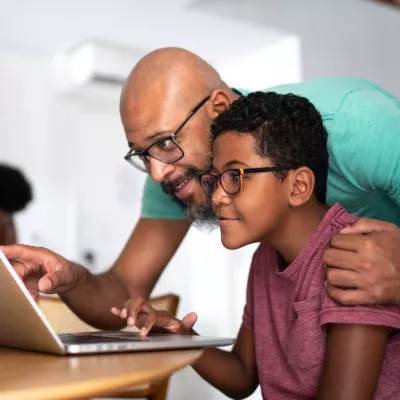- AdventHealth

Spending more time at home has many of us taking up new hobbies and habits. Maybe you’ve found that video games are just the distraction you need.
All that extra time on your phone, tablet, console or computer may be giving your mind a much-needed break. But it may not be so good for your body. In fact, too much gaming or other digital pastimes like scrolling on social media may lead to some serious health woes like neck and wrist pain.
Feeling Pain While You Game?
Playing video games often calls for nimble finger and wrist movements. Your hands may be spending long hours grasping, pushing or scrolling. The result could be an overuse injury.
Also called a repetitive motion disorder, overuse injuries typically occur in people who do repetitive tasks like playing an instrument, working on an assembly line or typing on a computer. You can get one playing sports like golf or tennis — hence the name golf or tennis elbow. And you can also develop an overuse injury while gaming, even though you may not be physically moving much of your body.
Some common overuse injuries for gamers include carpal tunnel syndrome, trigger finger and De Quervain’s tendinosis. These conditions occur when a tendon becomes inflamed. Tendons are pieces of tissue that connect your muscles to your bones.
When a tendon becomes swollen and inflamed, it becomes harder to move, and it may press on nearby nerves. For gamers, this tendonitis often happens in the thumb, the fingers or wrist. You may then notice these symptoms:
-
Loss of flexibility and strength
-
Numbness
-
Pain
-
Stiffness
-
Swelling
-
Tingling
Preventing or Caring for an Overuse Injury
If you think you may be developing or already have an overuse injury from gaming or scrolling on your cell phone, you can take some steps at home to ease your symptoms. First, cut back or take extra breaks. Overuse injuries often get better when you simply give the affected body part time to rest and recuperate.
Along with taking breaks, gentle stretching and relaxation exercises may help. Other ways you may be able to ease symptoms, according to the National Institute of Neurological Disorders and Stroke, include:
-
Applying ice to the affected body part
-
Maintaining good posture
-
Taking over-the-counter medicines for pain and swelling
-
Wearing a splint
Poor posture, in particular, can contribute to an overuse injury, especially if you slouch or slump for long hours. You may start to have neck and back pain as your tendons and muscles twist out of alignment. Over time, problems with posture can lead to chronic pain, joint problems and decreased flexibility and balance, according to the National Library of Medicine.
Maintaining good posture while sitting, walking and doing other activities can protect your body — and especially your spine — from injury. As often as possible, make sure you stand or sit up straight and keep your head level.
Specialists at the Ready
If you suffer from severe or lasting pain and discomfort, our team of upper extremity specialists, including skilled surgeons, physical therapists, and more, are here to help. Our Hand to Shoulder Center is focused on providing personalized, cost-effective, evidence-based treatment plans designed for you utilizing both non-surgical and surgical options to help you get back to your normal routine faster.
If you are concerned about getting in-person care right now, know that we’re doing everything we can to keep you safe. We’re employing special precautions as our facilities reopen. These include:
-
Frequent cleaning and disinfecting
-
Social distancing measures during health care visits
-
Universal face mask policy
-
Updated visitor policy
Here for Your Whole-Health Needs
We want to provide the health care you need at your comfort level. If you’re not ready to come in for care, you may be able to have a virtual visit with an orthopedic specialist in the comfort of your own home. Learn more about our orthopedic care options at the Hand to Shoulder Center here.



